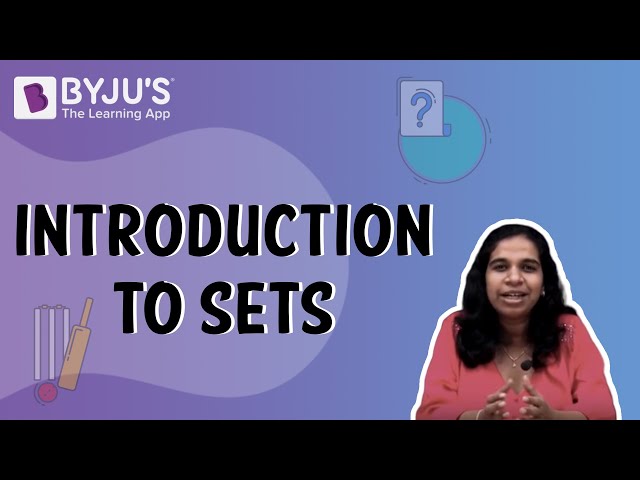Class 11 Maths Chapter 1 Sets MCQs (Multiple-choice questions) are available here with answers. All the MCQs are prepared as per the latest exam pattern and CBSE Syllabus (2022-2023). The objective questions are prepared by our subject experts, with proper explanations. MCQs of Class 11 Maths Chapter 1 will include all the concepts of the NCERT curriculum. Practising these multiple-choice questions will help Class 11 students to score good marks in the examination.
Also check: Class 11 Maths chapter-wise MCQs
MCQs for Class 11 Maths Chapter 1 Sets
MCQs of Chapter 1 Sets Class 12 Maths are provided here with the correct option. These multiple-choice questions for sets are given here with proper explanations. The questions are based on the Sets concept and related formulas. Students are suggested to solve the questions by themselves and then verify with the provided answers.
Class 11 Maths Chapter 1 Sets MCQs – Download PDF
Q.1: How many elements are there in the complement of set A?
A. 0
B. 1
C. All the elements of A
D. None of these
Answer: A. 0
Explanation: The complement of a set A will contain the elements that are not present in set A.
Q.2: Empty set is a _______.
A. Infinite set
B. Finite set
C. Unknown set
D. Universal set
Answer: B. Finite set
Explanation: The cardinality of the empty set is zero, since it has no elements. Hence, the size of the empty set is zero.
Q.3: The number of elements in the Power set P(S) of the set S = {1, 2, 3} is:
A. 4
B. 8
C. 2
D. None of these
Answer: B. 8
Explanation: Number of elements in the set S = 3
Number of elements in the power set of set S = {1,2,3} = 23
= 8
Q.4: Order of the power set P(A) of a set A of order n is equal to:
A. n
B. 2n
C. 2n
D. n2
Answer: C. 2n
Explanation: The cardinality of the power set is equal to 2n, where n is the number of elements in a given set.
Q.5: Which of the following two sets are equal?
A. A = {1, 2} and B = {1}
B. A = {1, 2} and B = {1, 2, 3}
C. A = {1, 2, 3} and B = {2, 1, 3}
D. A = {1, 2, 4} and B = {1, 2, 3}
Answer: C. A = {1, 2, 3} and B = {2, 1, 3}
Explanation: Two sets are said to be equal if they both have the same elements.
Q.6: Let U = {1, 2, 3, 4, 5, 6, 7, 8, 9, 10}, P = {1, 2, 5}, Q = {6, 7}. Then P ∩ Q’ is :
A. P
B. Q
C. Q’
D. None
Answer: A. P
Explanation: Given,
U = {1, 2, 3, 4, 5, 6, 7, 8, 9, 10}
P = {1, 2, 5}
Q = {6, 7}
Q’ = {1, 2, 3, 4, 5, 8, 9, 10}
Hence,
P ∩ Q’ = {1, 2, 5} = P
Q.7: The cardinality of the power set of {x: x∈N, x≤10} is ______.
A. 1024
B. 1023
C. 2048
D. 2043
Answer: A. 1024
Explanation: Given,
Set X = {x: x∈N, x≤10}
X = {1, 2, 3, 4, 5, 6, 7, 8, 9, 10}
Number of elements of power set of X, P(X) = 210 = 1024
Q.8: Write X = {1, 4, 9, 16, 25,…} in set builder form.
A. X = {x: x is a set of prime numbers}
B. X = {x: x is a set of whole numbers}
C. X = {x: x is a set of natural numbers}
D. X = {x: x is a set of square numbers}
Answer: D. X = {x: x is a set of square numbers}
Explanation: Given,
X = {1, 4, 9, 16, 25,…}
X = {12, 22, 32, 42, 52, …}
Therefore,
X = {x: x is a set of square numbers}
Q.9: If A, B and C are any three sets, then A × (B ∪ C) is equal to:
A. (A × B) ∪ (A × C)
B. (A ∪ B) × (A ∪ C)
C. (A × B) ∩ (A × C)
D. None of the above
Answer: A. (A × B) ∪ (A × C)
Explanation: Given,
A, B and C are any three sets.
Now, A × (B ∪ C) = (A × B) ∪ (A × C)
Q.10: The range of the function f(x) = 3x – 2‚ is:
A. (- ∞, ∞)
B. R – {3}
C. (- ∞, 0)
D. (0, – ∞)
Answer: A. (- ∞, ∞)
Hint:
Let the given function be
y = 3x – 2
⇒ y + 2 = 3x
⇒ x = (y + 2)/3
Since, for all values of y, x has different values. Thus, values of x and y can range from -∞ to ∞.
So, Range{f(x)} = R = (-∞, ∞).
Video Lesson on What are Sets


Comments